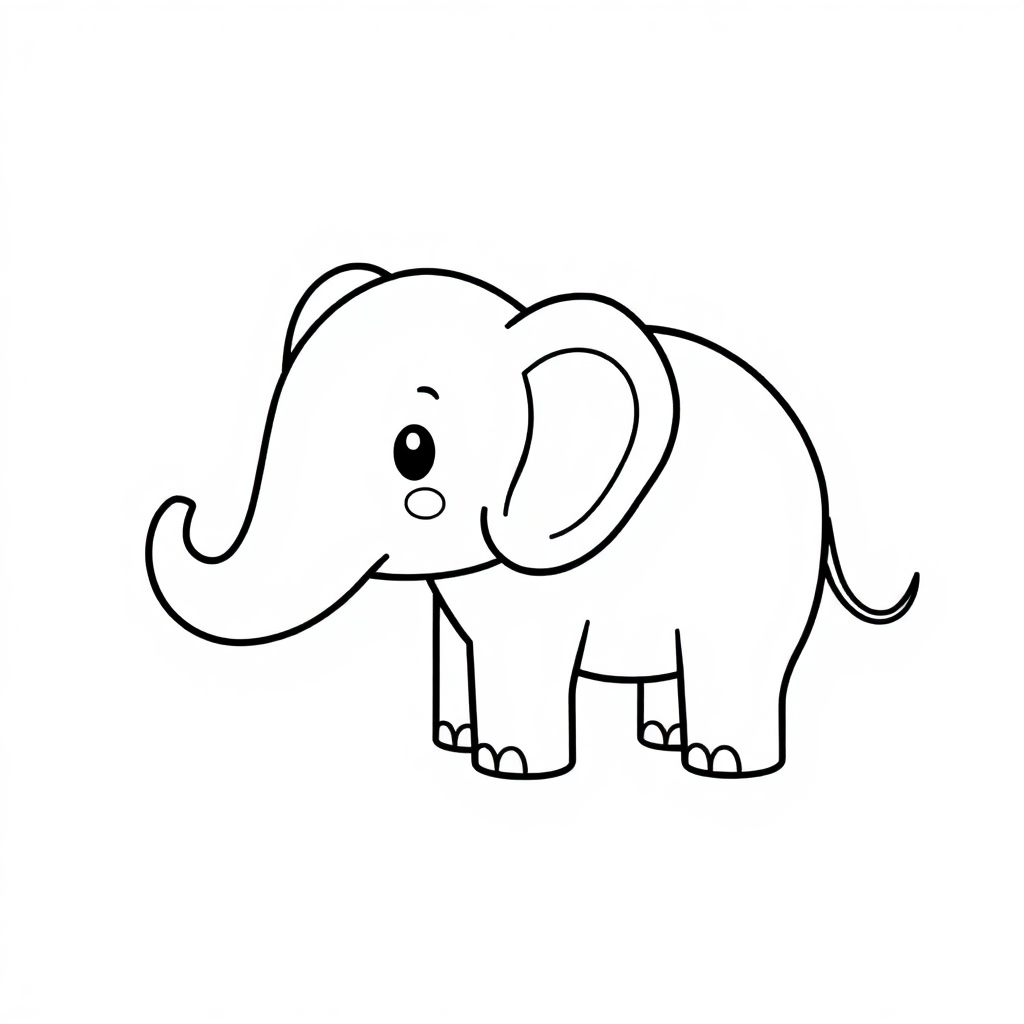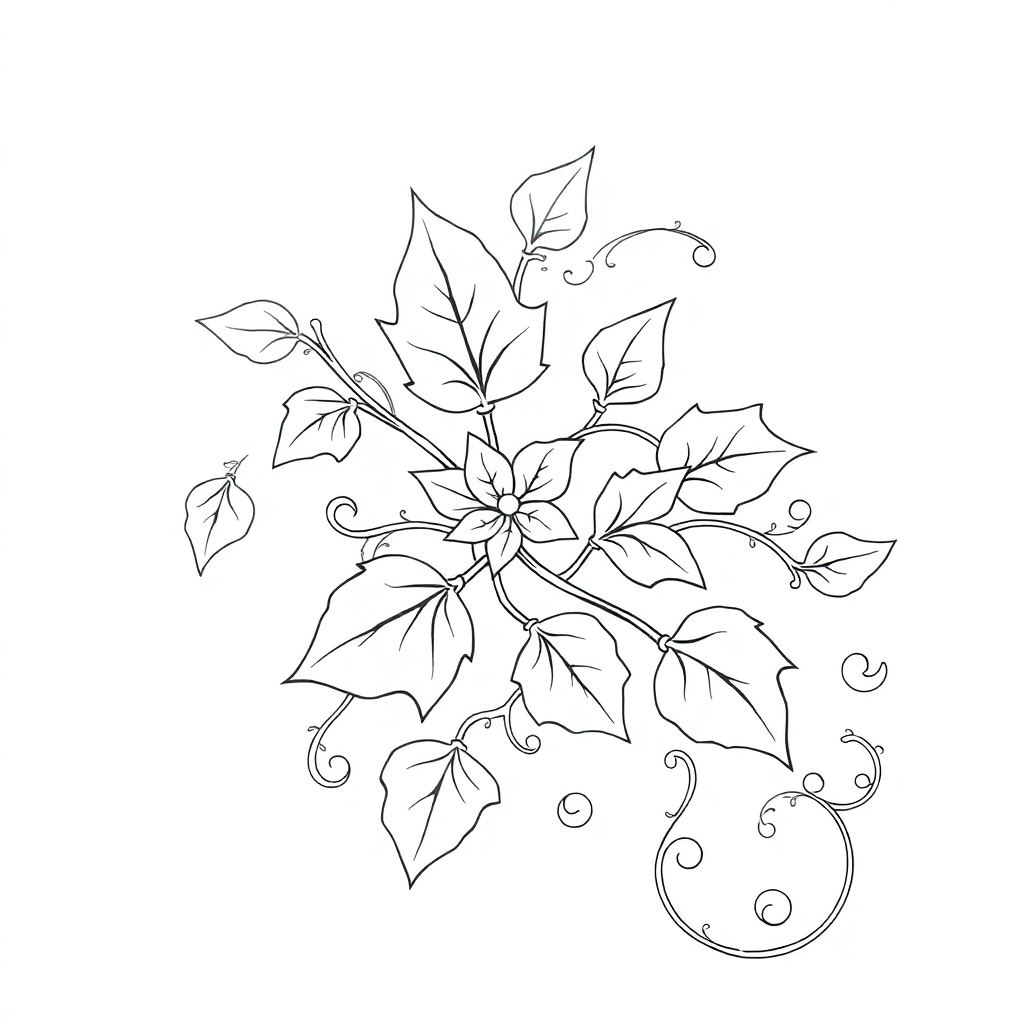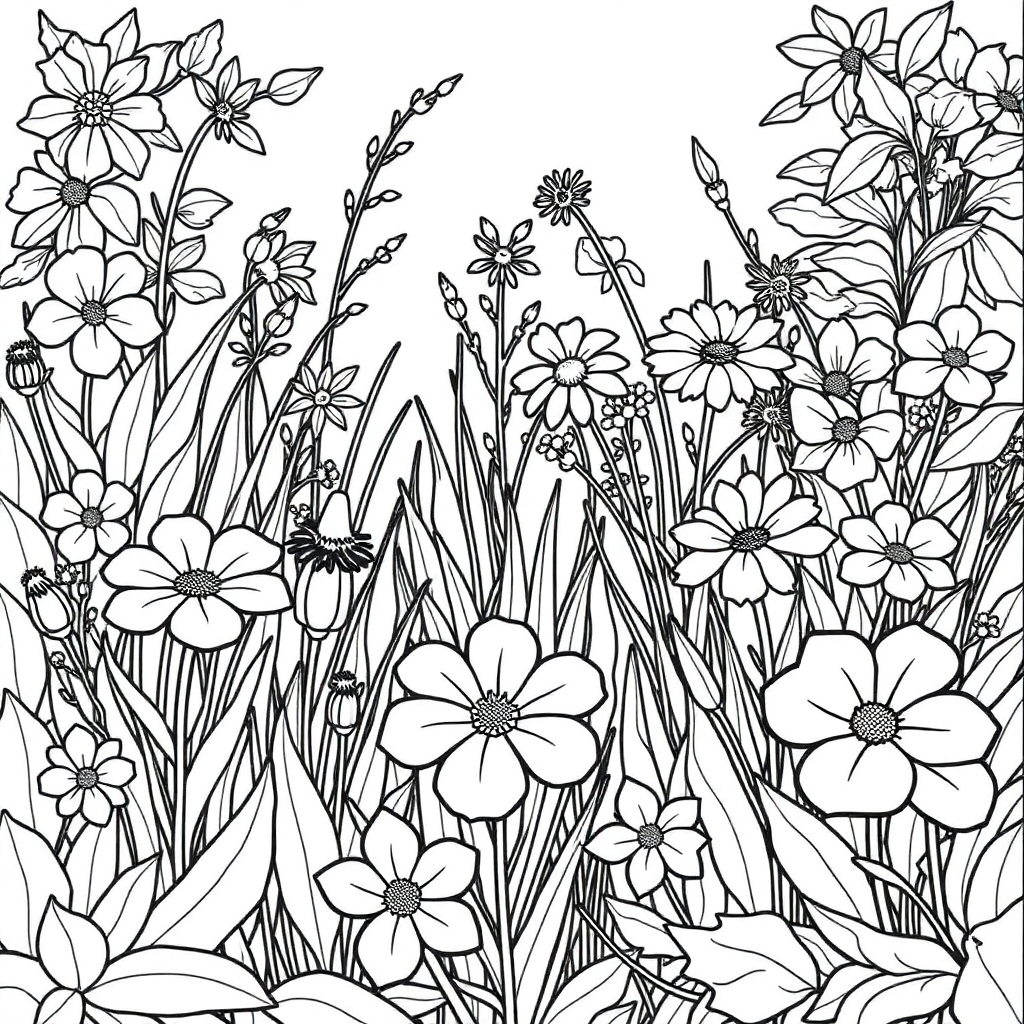AI-Enhanced Coloring Book Design Guide
This guide explores how to create professional coloring book pages by combining AI tools with traditional vector design. We'll cover different styles and complexity levels suitable for various age groups and skill levels.
Introduction to Coloring Book Styles
Popular Styles
-
Simple Line Art
- Clean, bold outlines
- Minimal internal details
- Large coloring spaces
- Ideal for children (ages 3-8)
-
Mandala and Geometric
- Intricate circular patterns
- Repeating elements
- Symmetrical designs
- Popular for meditation and stress relief
-
Nature and Botanical
- Floral patterns
- Animal designs
- Landscape scenes
- Suitable for all skill levels
-
Whimsical and Fantasy
- Cute characters
- Fairy tale scenes
- Imaginative compositions
- Appeals to children and teens
-
Detailed Illustrative
- Complex scenes
- Fine details
- Multiple elements
- For advanced colorists
Design Tools
Our coloring book design workflow combines:
- Inkscape: Primary tool for vector design and cleanup
- AI Art Generator: Creates initial concept art
- AI Vectorizer: Converts art to vector format
- AI Background Remover: Cleans up generated images
Design Examples and Workflows
Example 1: Simple Children's Design
Use Case: Basic animal characters for young children
Workflow:
- Generate Initial Concept with AI Art Generator
Prompt: "Create a cute cartoon elephant design with simple lines.
Bold outlines, minimal internal details. Child-friendly style.
Black and white line art suitable for coloring books."

-
Vectorization Process
- Use AI Vectorizer with settings:
- Line thickness: Heavy
- Detail level: Low
- Corner smoothing: High
- Export as SVG
- Use AI Vectorizer with settings:
-
Refinement in Inkscape
- Simplify paths
- Round corners
- Adjust line weights
- Remove tiny details
- Ensure minimum 0.25" spaces
Pro Tips:
- Keep lines at least 2pt thick
- Avoid small, intricate areas
- Use rounded corners
- Space elements well apart
Example 2: Decorative Pattern Design
Use Case: Repeating patterns with natural elements for adults
Workflow:
- Generate Base Pattern
Prompt: "Create decorative elements with leaves, swirls, and vines.
Black and white line art suitable for adult coloring books.
Clear spacing between elements. Art nouveau style with flowing curves."

- Vector Processing
- Vectorize with settings:
- High detail preservation
- Uniform line weight
- Sharp corners
- Vectorize with settings:
- Vector Processing
- Use AI Vectorizer with settings:
- Line smoothing: Medium
- Detail preservation: High
- Corner accuracy: Medium
- Remove speckles: Enabled
- Pattern Creation in Inkscape
- Create tile pattern
- Arrange elements in grid
- Test pattern continuity
- Adjust element density
- Apply pattern transformations:
- Mirror elements
- Rotate for variety
- Scale for interest
- Refine line weights:
- Main elements: 2pt
- Secondary details: 1pt
- Ensure consistent weight
Pro Tips:
- Break up large areas with subtle details
- Vary pattern density for visual interest
- Leave adequate coloring spaces (minimum 0.25")
- Test pattern connections at tile edges
- Consider using clipping masks for edge treatment
Example 3: Nature Scene
Use Case: Botanical garden scene with varying detail levels
Workflow:
-
Layout Planning
- Create page borders
- Define focal points
- Plan detail distribution
- Consider composition
-
Generate Elements
Prompt: "Create a garden scene with various flowers and leaves.
Clear black line art style. Mix of large and small elements.
Suitable for adult coloring books. No shading or fills."

- Assembly Process
- Vectorize elements
- Arrange composition
- Add varying detail levels
- Balance space distribution
Pro Tips:
- Vary detail complexity
- Create focal points
- Leave adequate spacing
- Consider page flow
Technical Specifications
Page Setup
-
Standard Sizes:
- Letter: 8.5" × 11"
- A4: 210mm × 297mm
- Square: 8" × 8"
-
Margins:
- Outer: 0.5" minimum
- Binding: 0.75" minimum
- Safe zone: 0.25" from edges
Line Specifications
- Minimum Line Weight: 0.5pt
- Standard Line Weight: 1-2pt
- Maximum Line Weight: 4pt
- Minimum Space: 0.25"
Design Principles
Composition Guidelines
-
Balance
- Distribute elements evenly
- Mix detail levels
- Create clear focal points
- Maintain white space
-
Flow
- Guide eye movement
- Connect elements
- Create visual paths
- Consider page turns
Age-Appropriate Design
-
Children (3-8)
- Large spaces
- Simple shapes
- Bold lines
- Basic subjects
-
Youth (9-12)
- Medium complexity
- Varied subjects
- Some detail work
- Popular themes
-
Teens/Adults
- Complex patterns
- Fine details
- Challenging designs
- Artistic themes
Production Guidelines
File Preparation
-
Vector Requirements
- Clean paths
- Joined endpoints
- No double lines
- Proper grouping
-
Export Settings
- Format: PDF/X-1a
- Resolution: 300 DPI
- Color: Pure black
- Line art optimization
Print Considerations
-
Paper Selection
- Weight: 70-100 lb text
- Finish: Smooth
- Opacity: High
- Bleed resistance
-
Binding Options
- Perfect binding
- Spiral bound
- Perforated pages
- Double-sided options
Best Practices
-
Design Clarity
- Test print designs
- Check line weights
- Verify spacing
- Ensure reproducibility
-
User Experience
- Consider skill levels
- Plan coloring time
- Create variety
- Allow creativity
-
Production Quality
- Clean vector paths
- Consistent line weights
- Proper formatting
- Print testing
Common Pitfalls to Avoid
- Spaces too small to color
- Inconsistent line weights
- Overcrowded designs
- Poor print reproduction
- Unclear detail areas
- Binding interference
- Bleeding issues
Quality Control Checklist
- Line weight consistency
- Minimum space requirements
- Print test completed
- Age-appropriate complexity
- Proper file format
- Clean vector paths
- Binding considerations
Remember to test your designs with actual coloring materials and consider the end user's experience. Different mediums (markers, pencils, etc.) may require different space considerations.